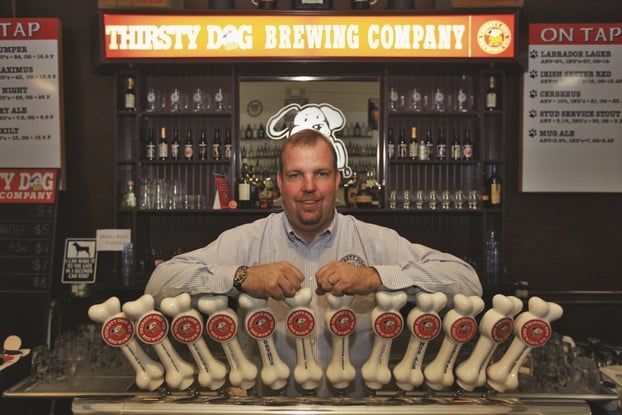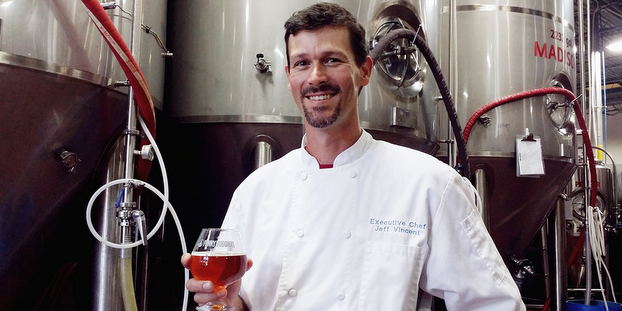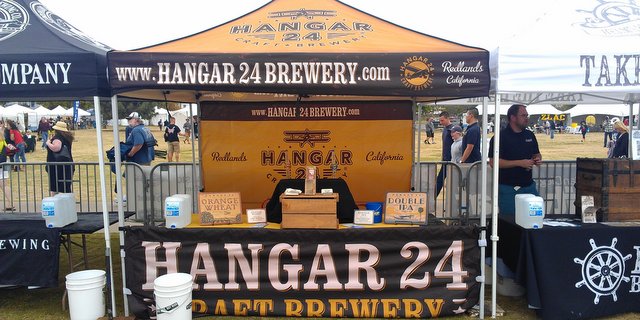During the holiday season, the Craft Brewing Business editors reluctantly head into the world to buy gifts and attend family gatherings. Before heading out though, let’s take a look at some of the top stories of the year from both the craft brewing industry and original features from Craft Brewing Business.
For many craft brewers, the challenge of opening a brewery isn’t how they’re going to brew, it’s how they are going to run their business. Running a small business is no easy task, and a brewery is no different. You have to balance your brewing, supply chain, employees, branding and beyond. It’s a complicated job, one that inspired the Craft Brewing Business team to launch this resource dedicated to improving brewers’ businesses. These are the best of the best brewing business features CBB tackled this year.
Five business issues to consider before starting a brewery
With all the excitement surrounding opening a brewery, there are some realities an aspiring brewer must reconcile with to make this dream work. Brewing beer is fun and owning a brewery is more fun, but at the end of the day, it narrows down to owning a business. So here are five points — from the business point of view — to think over as you plan your future brewery.
Craft a brewing business plan: Tips from a brewery in planning
How do you turn a brewing passion into a brewing business? Craft brewers across the country mull that question over each day, with each brewer needing to address regional challenges and seek new strategies for seizing opportunities. What sets you apart? Will your production/revenue equation justify your company’s existence?
Take Spencer O’Bryan and Brennan Mann, for example. The two had homebrewed and studied brewing as a hobby for much of the last decade, but then became interested in bringing this beer passion to a wider audience in their local area. Their local area also happens to be Denver, one of the more competitive areas for craft brewing in the country. Launching a new craft brewing brand here would require some serious strategic planning, which led them to the fall 2012 NxLeveL for Start-Ups course at the Denver Metro Small Business Development Center (SBDC), which was a crash course in business plan writing.
Education guide for brewers: From craft brewing to brewery ownership
Craft brewing is serious business, and if you want to be successful in the increasingly competitive industry, knowledge can be your advantage. Whether you’re a new brewer with a dream or an established craft brewer looking to expand your horizons, Craft Brewing Business has you covered. We’ve culled together a guide of education programs from around the craft beer industry. Check out the history, courses and special events, speakers and more that the industry’s best brewing education programs have to offer.
Five key concepts craft brewers should embrace at beer events
With a particular focus on beer events and festivals, Kick Boom Pow produces quality branded beer gear for craft breweries — from jockey box covers and banners to tents and tablecloths (and beyond). How does Kick Boom Pow know so much about branding? Well, they attend tons of beer events every year, producing the gear, setting up booths and working it themselves. It’s the same reason we asked these event brand experts to pen this piece on beer event tips. These guys and gals understand beer events are the quickest and easiest way for craft breweries to market beer and showcase brands.
The Brewpub Files
Craft brewery start-ups have a bevy of business choices. Chief among them: the brewery size and type. Will it strictly be a production brewery or will the brewer diversify its brand offering into a tasting room or brewpub? Craft Brewing Business has already looked at crafting a successful tasting room, and now we’re opening the Brewpub Files — a series of brewpub case studies that investigates the strategies and philosophies behind some of the most successful brewpubs in the country.
Tasting room tips: Build, run and brand your brewery showcase
Craft brewers and drinkers alike love to come together to talk beer — new beers, old favorites, upcoming seasonals, the latest collaborations and even the brewing process. Building on that beer passion, brewers are fostering a customer community with tasting rooms that also improve the brewery’s bottom line.
“Based on our research, it’s critical to have a tasting room because you make more money selling beer on site as opposed to distribution,” explained Eddie Leon, owner of MIA Brewing Co. (which recently switched its name from Most Wanted Brewery due to a trademark dispute), a soon-to-open craft brewery in Miami that is currently in the design phase of building its facility, which includes a tasting room. “For example, instead of selling a keg for $80, you’re going to be retailing each pint, making maybe $400 off that keg. It’s a lot of profit. In Florida, there are a few breweries that put a lot of emphasis on their tasting rooms, and they make a lot of money from that.”
It’s not just Florida. Craft breweries across the country are putting an emphasis on their tasting rooms. Whether you’re an established craft brewer or just starting out, a tasting room should definitely be on your business plan radar as craft beer popularity rises and customers seek out more information about your beers.
Craft beer trademark, copyright tips: Keep your brand free from disputes
With legal issues popping up, the 2013 Craft Brewers Conference and BrewExpo America (CBC) launched a valuable presentation on trademark and copyright law that offered a sobering look at the complicated ins and outs of today’s small business climate. If you couldn’t make it out to D.C. for the CBC, or just couldn’t make it out of your hotel room after a long night of networking, don’t worry — Craft Brewing Business has your back.
As the potential liabilities in terms of trademarks, copyright, fair use and the like rattled off in Ballroom C of the Walter E. Washington Convention Center, you could see the attendees slightly react, as if to say “Hmmm, I’m not sure we’ve done that” or “Uh oh.” Mark Traphagen of Traphagen Law PLLC in Washington, D.C., was doing the rattling.
Before diving into the specific nuts and bolts of liability and law, brewers need to at least try and operate with a reasonable level of confidence and comfort…
Brewer training: How to turn a keg washer into a brewer
As the craft brewing industry grows, industrious craft breweries start to add to their footprint. This requires more equipment, more building space, more locations and, of course, more employees.
Oh, but where do you begin a newbie in the brewing process? So many terms, so many tasks: How do you train these new employees without slowing your continued growth or diminishing the quality that has brought you to that point? We asked the team at Ballast Point Brewing Co. about their corporate philosophy.
Don’t underdo your next move, and other space planning advice
In our feature on best practices for process/packaging efficiency, we discussed facility planning strategies with Steve Hunter, owner of Facility Planning Inc. During that chat with Hunter, the point he kept coming back to was: When you are considering that next move, be sure to think big. Under-sizing your next expansion could actually cost you more money than over-preparing for success with your next facility.
“We emphasize that because it’s the most common error we see on the distributor side. People will find a piece of property, think it’s perfect, build it out and then in five years they are squeezed. There are no more room for trucks, can’t extend the building — it’s not good,” Hunter said.
Don’t just think about right now or your next goal or two, really think about what you can become in the long run. If you are brewing 1,000 barrels (bbls) and want to go to 2,500 bbls, that’s a good goal, but Hunter said think about doubling that.
Beyond beer: Merchandise enhances the experience
Craft beer hands the power of choice back to the drinker. It’s an experience that goes beyond the brew, and as savvy business men and women, craft brewers are leveraging that experience beyond the beer and expanding into merchandise.
“We want to relay a consistent brand message to our consumers, both through our beer and the merchandise we offer,” said Matt Eldridge of the Breckenridge Brewery marketing team. “So we always make sure to have a Breckenridge Brewery branded piece on the forefront, with specific beer branded pieces as secondary. Also, we try to offer and highlight specific beer branded products based on those top selling beers. In our case, Agave Wheat is a great example, and we have a few Agave Wheat pieces offered.”
From hats and bottle openers to T-shirts and tap handles, the sky is the limit when choosing merchandise that can support your beer brand. Unfortunately, small craft brewers typically have a budget that is more down to earth. If you’re looking to start building your brand’s merchandise offering, T-shirts are a great place to start.






RT @BrewandCovered: For many craft brewers, the challenge of opening a brewery isn’t how to brew, it’s how to run their business. http://t.…
For many craft brewers, the challenge of opening a brewery isn’t how to brew, it’s how to run their business. http://t.co/RKgfaS17OX
RT @CraftBrewingBiz: Best of business: From tasting rooms and brewpubs to trademarks and tax tips http://t.co/7oQVyYLtnl
Best of business: From tasting rooms and brewpubs to trademarks and tax tips – Craft Brewing Business http://t.co/ivbzfaadcK
Jason Kneupper liked this on Facebook.